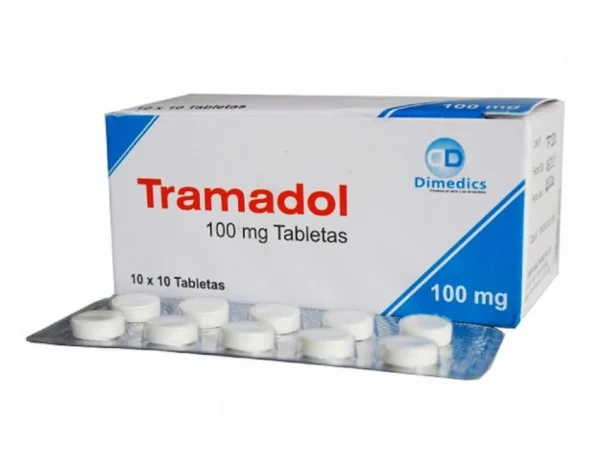Description
Tramadol 100mg contains Tramadol, an opioid analgesic used for the management of moderate to severe pain. It works by changing the way the brain perceives and responds to pain. Tramadol is typically prescribed for pain relief in conditions like injuries, post-surgical pain, and chronic pain that requires opioid-level treatment.
1. Uses of Tramadol 100mg
Tramadol is an effective pain management medication that doctors prescribe to:
Relieve moderate to severe acute pain
Treat pain caused by injuries or surgeries
Manage chronic pain conditions, such as arthritis or lower back pain, when other medications are not sufficient
Provide pain relief in neuropathic conditions
2. Dosage Information
The dosage of Tramadol 100mg depends on the severity of the pain and individual patient needs. Generally:
For moderate to severe pain relief, the typical dosage is 50mg to 100mg every 4 to 6 hours, as needed.
The maximum daily dose is usually 400mg, but this can vary based on your doctor’s recommendation.
Always follow the prescribed dosage and do not exceed the recommended amount, as Tramadol can lead to dependence and overdose if misused.
3. How to Take Tramadol 100mg
Tramadol 100mg is taken orally, usually with water. It can be taken with or without food, but taking it after meals may reduce the chance of stomach upset. To ensure effective pain relief, take it exactly as prescribed and avoid changing the dose on your own. Misuse or overuse can increase the risk of side effects, including addiction.
4. Common Side Effects
Like most opioid medications, Tramadol can cause several side effects. The most commonly reported ones include:
Nausea
Dizziness or lightheadedness
Drowsiness
Headaches
Constipation
These side effects are generally mild, but if they persist or worsen, it’s important to consult your doctor.
5. Serious Side Effects and Risks
In some cases, Tramadol can cause more serious side effects. These include:
Breathing difficulties or respiratory depression
Severe drowsiness, confusion, or fainting
Allergic reactions such as rashes, itching, or swelling
Mood changes such as agitation or hallucinations
Long-term use can lead to tolerance, dependence, and withdrawal symptoms if the medication is stopped abruptly. Consult your doctor before making any changes to your medication routine.
6. Important Safety Information
While taking Tramadol, it is crucial to avoid alcohol and other sedatives, as they can enhance the sedative effects and increase the risk of breathing problems. Do not drive or operate heavy machinery until you know how Tramadol affects you, as it can cause drowsiness or dizziness. This medication should only be used under a doctor’s supervision, especially if taken long-term to manage chronic pain.
7. Who Should Avoid Taking Tramadol 100mg?
Tramadol is not suitable for everyone. Those who should avoid taking this medication include:
Individuals with severe breathing problems or asthma
People with a history of substance abuse or opioid addiction
Pregnant or breastfeeding women, as the medication may affect the baby
Anyone with severe liver or kidney disease
Those allergic to Tramadol or any other opioid medications
Before starting Tramadol, make sure to share your full medical history and current medications with your doctor to ensure it is safe and appropriate for you.




Reviews
There are no reviews yet.